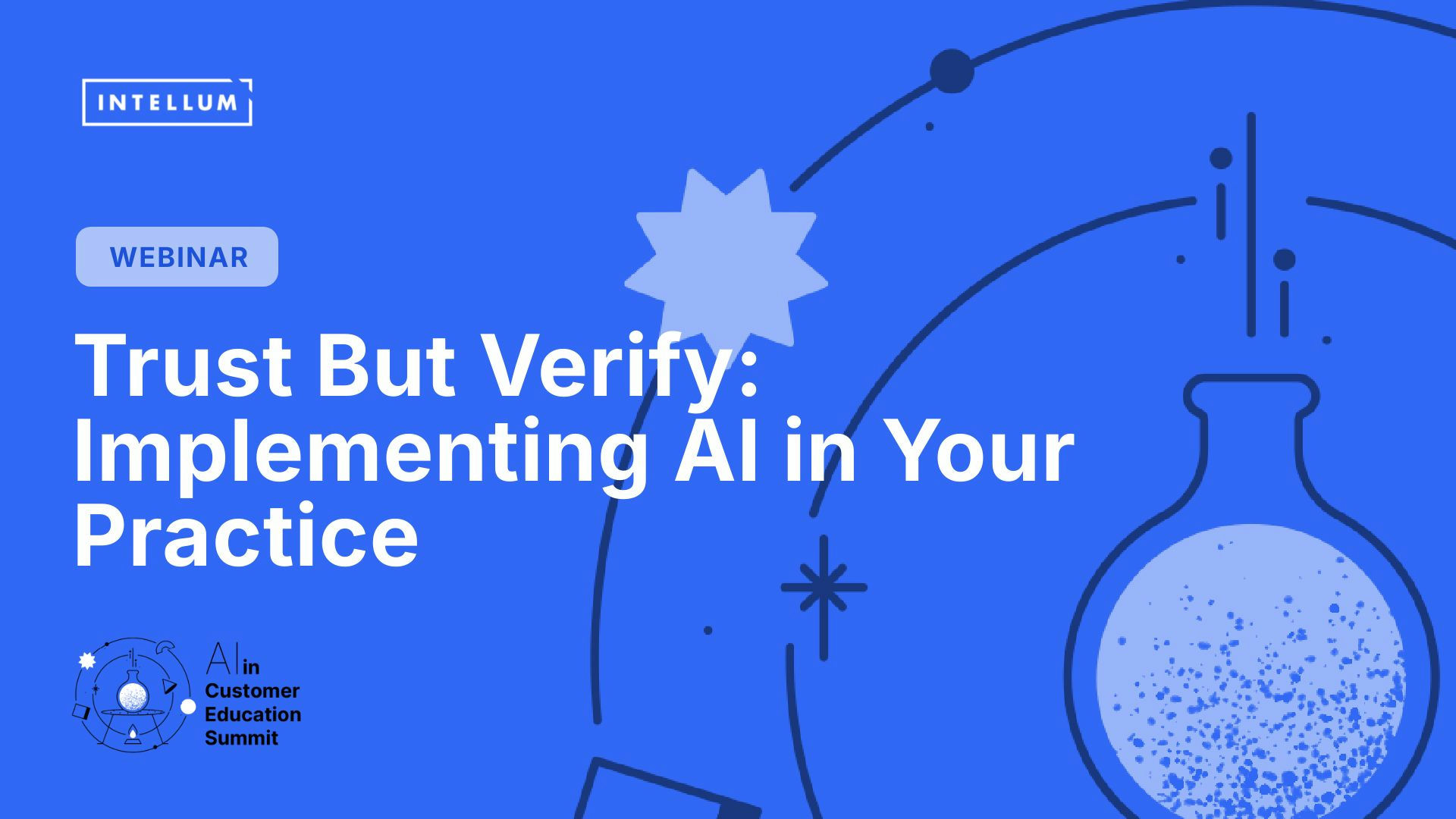Practical Applications for AI in Education
Earlier this year, we commissioned a research study from Forrester to gain insight on the value of customer education from 300 U.S.-based customer education decision-makers. As part of that study, we asked these leaders to share their timeline for implementing AI and how they expect it to make a difference to their education programs.
The data found that 51% of those surveyed are already using AI—and a whopping 95% plan to use AI as part of their education programs within the next 12-18 months.
If you’re just getting started on your AI journey, here are six recommendations we’ve gained from experts:
1. Start with Security
There’s often fear surrounding data access when it comes to AI. Will my company and customers’ private information be used to train AI models? To mitigate these concerns, it’s recommended to purchase a corporate enterprise subscription to ensure a secured environment where your IP remains protected (and not used to train AI models).
Pro Tip: Before choosing your AI tool, look at the terms and guidelines to better understand how it stores or uses your data. You can always double check with your legal or security teams to determine the best fit.
2. Learn to Write Effective Prompts
Here’s what’s neat about AI: It does exactly what it’s told to do. So just like you would when delegating to a new employee, you need to give clear and explicit instructions about what you’re looking for.
Writing effective AI prompts determines the quality of output. When you’re first starting out, it’s important to give it raw information, as if you were talking to a human, and be as descriptive as possible. For example, include details about your audience, your brand identity (voice and tone, style, etc.) and the context for the material you’re creating. Tell it about your role, describe the task that you’ve assigned – try to avoid ambiguity!
Pro Tip: Defining constraints is equally as important. Writing things like “Don’t use these words ____” helps guide AI in knowing what to avoid. Likewise, clarify what the final product should look like by providing screenshots of examples or describing the format that you want.
Prompt Example: I am a (role/title) at (company name) and I have been assigned to (describe the task). I am going to give you (name of document/link) as input and would like you to follow these guidelines: Write the copy in plain language, format the information in a table with the column headings in bold. Don’t use words like (x, y, z) and be succinct.
3. Use AI for the First Draft
Writing a first draft of nearly anything can be time-consuming and require a lot of mental energy, depending on the topic. To save time, use AI to write your first draft of:
- Course descriptions
- Scripts
- Scenarios
- Comprehension questions
Feed it information about your company, your program, and your learning audience, and ask it to create a course description, a sample assessment, sample scenarios or a sample script.
Prompt Example: Write a course description for a course titled (name of course). The audience for this course is (describe the type of student taking the course). The learning objectives of the course are (list the learning objectives). Find the outline for the course below (copy and paste the outline).
{{webinar-link}}
4. Summarize Subject Matter Expert Conversations
Ever been in a conversation with a subject matter expert (SME) about a topic and struggled to recap the conversation?
The good news is that many virtual conferencing tools (Microsoft Teams, Zoom, Google Meet) use AI to summarize meetings and highlight key discussion points. If you’re using a tool that doesn’t have this feature, you can upload a meeting transcript to a tool like ChatGPT and ask for an outline of the conversation with next steps. Leveraging AI in this way is low risk and allows you to quickly process new information with relative action items.
Pro Tip: Always check for hallucinations. Yes, we said it, hallucinations! AI is not perfect and can insert information that wasn’t mentioned in the conversation. Verify the output against your transcript or recollection of the conversation. Of course, when you send your course to your SME for review, they can also correct anything that was lost in translation.
5. Leverage Your Data
Proving the return of investment (ROI) of your education program is easy to do when backed by data—but if you don’t have the tools or resources to aggregate that data into a single dashboard, it can be challenging to map back to business outcomes.
AI can help here as well.
How? By submitting your files to the appropriate AI tool, you can tell it how you want your data formatted and no longer spend hours in Google Sheets writing formulas and creating charts. Your end result is time saved, and a data narrative that presents an in-depth analysis of your systems and demonstrates the impact of your program.
Pro Tip: Remember to check in with your security team before uploading your data files!
6. Market Your Content
Want to tell the market about the amazing learning content you’ve created? Your marketing team does, too. And while it may not be your sole responsibility to create marketing assets for your go-to-market (GTM) motion, you can leverage AI to assist you in drafting key assets to save some time for your marketing colleagues.
GTM assets may include one-pagers, email copy, social media posts, and internal enablement announcements. Prompt AI to take a first pass at crafting the message or layout of each, and you can be the one to perfect it before handing it off.
Now what?
So perhaps using AI isn’t so scary after all, right?
The integration of AI into your daily business operations is not just a forward-thinking strategy, but a practical necessity in today’s competitive landscape. From automating mundane tasks to providing deep insights through data analysis, the applications of AI can wildly improve your efficiency and effectiveness.
Don’t wait for the future to come to you—take a first step by implementing at least one of these AI-driven solutions today. The possibilities are endless, and the time to act is now.




.png)

